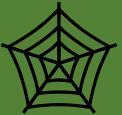August
No new wild flowers were found in August. Black knapweed, field scabious, hawkbit and yarrow dominated the long grass with various others such as buttercup, daisy, red and white clover, self-heal, hawkweed, herb-Robert, convolvulus and pignut continuing their flowering season.
Amongst the short grass that hadn't been mown for a couple of weeks, some fungi appeared that had not been seen before. Being unsure of what they were I emailed some photos to Wild Foods in the UK who quickly reported back that they were the highly toxic destroying angel (Amanita bisporigera). These characteristically have a white or off-white cap 5-12 cm across with white 'free' gills. They occur singly or in small groups. The young angels are enclosed in a universal veil or volva, making them easily mistaken for edible puffballs.
Destroying angels, along with the death cap, contain amatoxin, a toxin that damages the liver and kidneys and is fatal if not treated immediately.
August 2020, more destroying angels were found and quickly removed. Other angels were also found in neighbours' gardens and are thought to be responsible for unknown illness in their dogs.
2021-2025, thankfully no further occurrences of destroying angels have been seen!
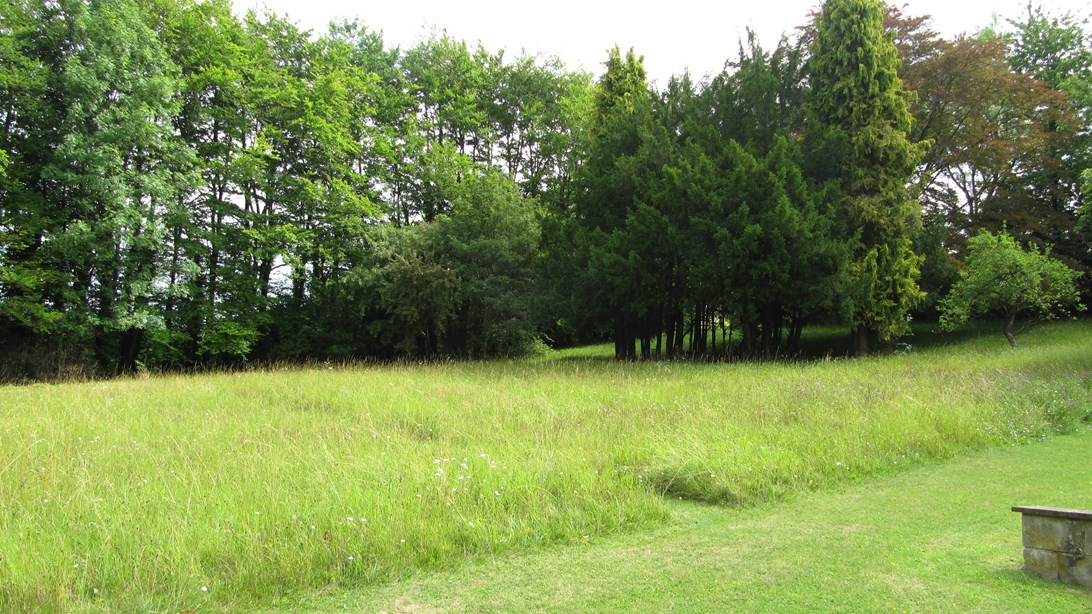
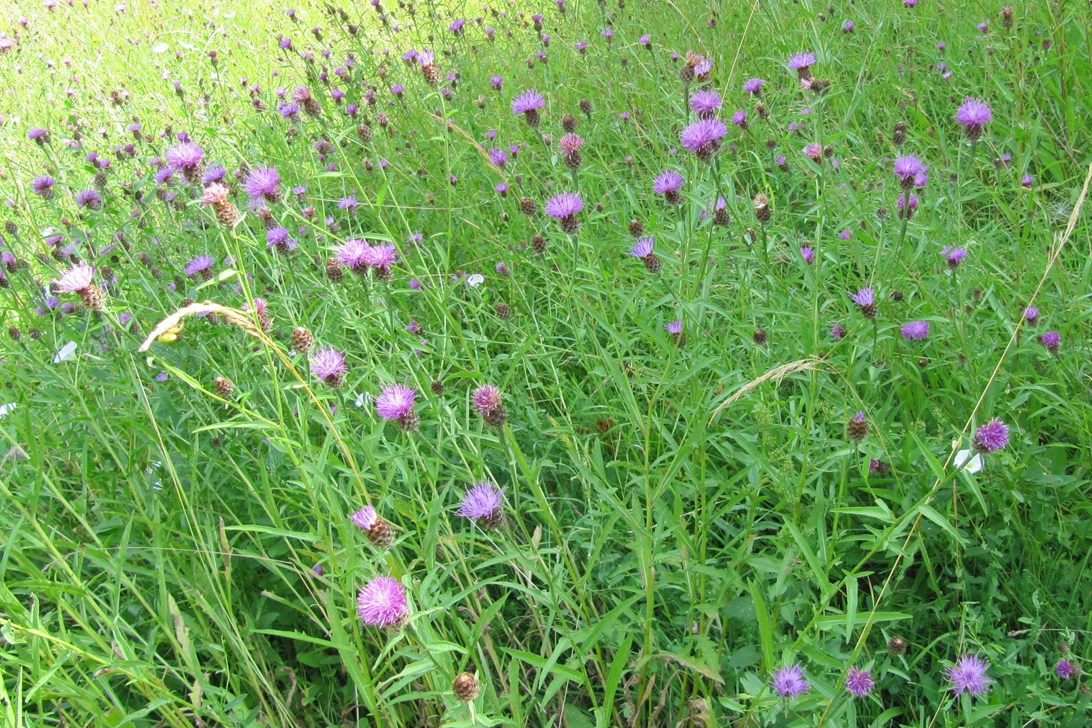
Black knapweed
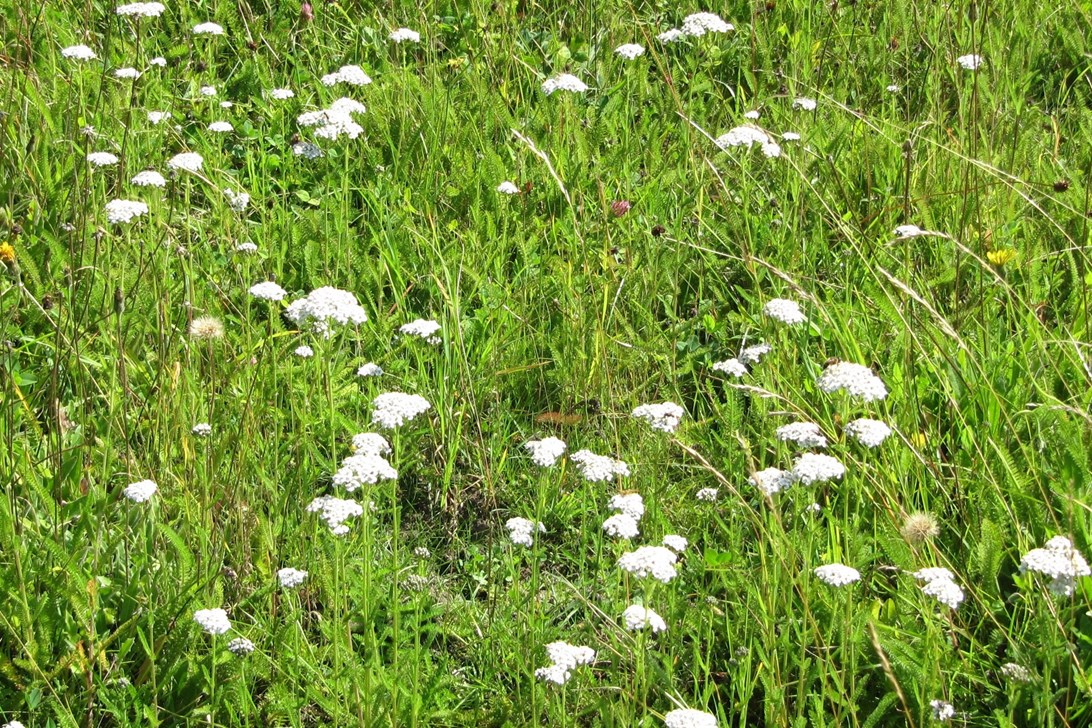
Yarrow
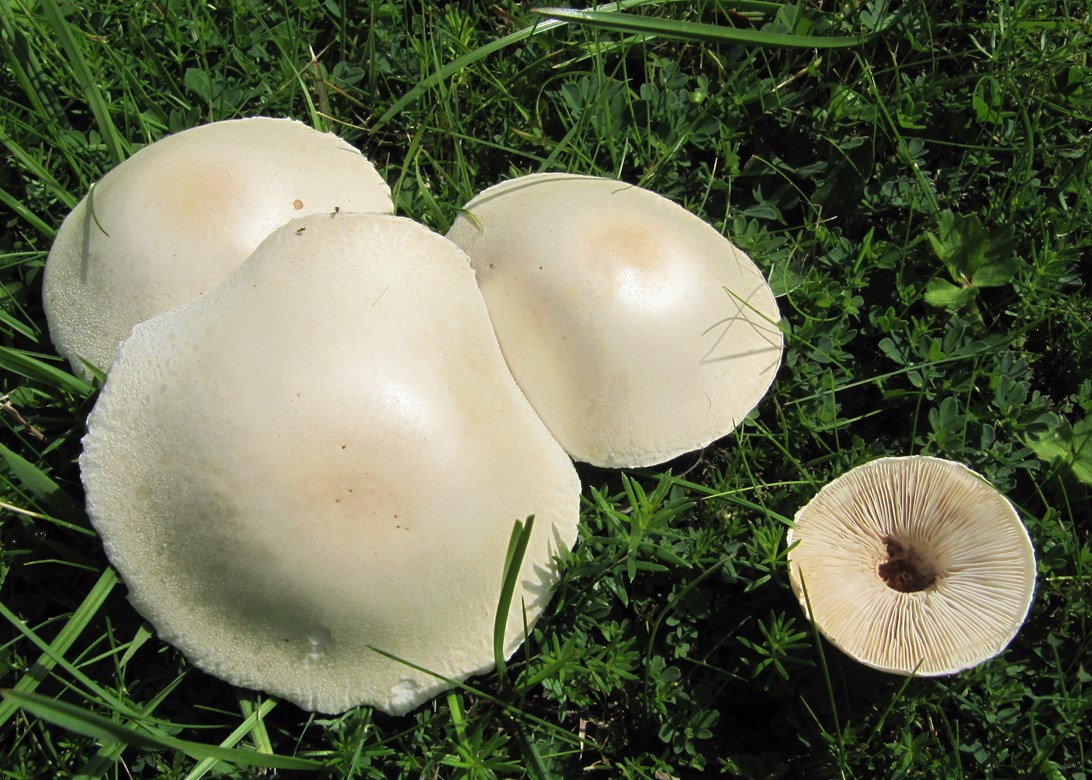
White cap 5-12 cm across. White 'free' crowded gills not attached to the stalk
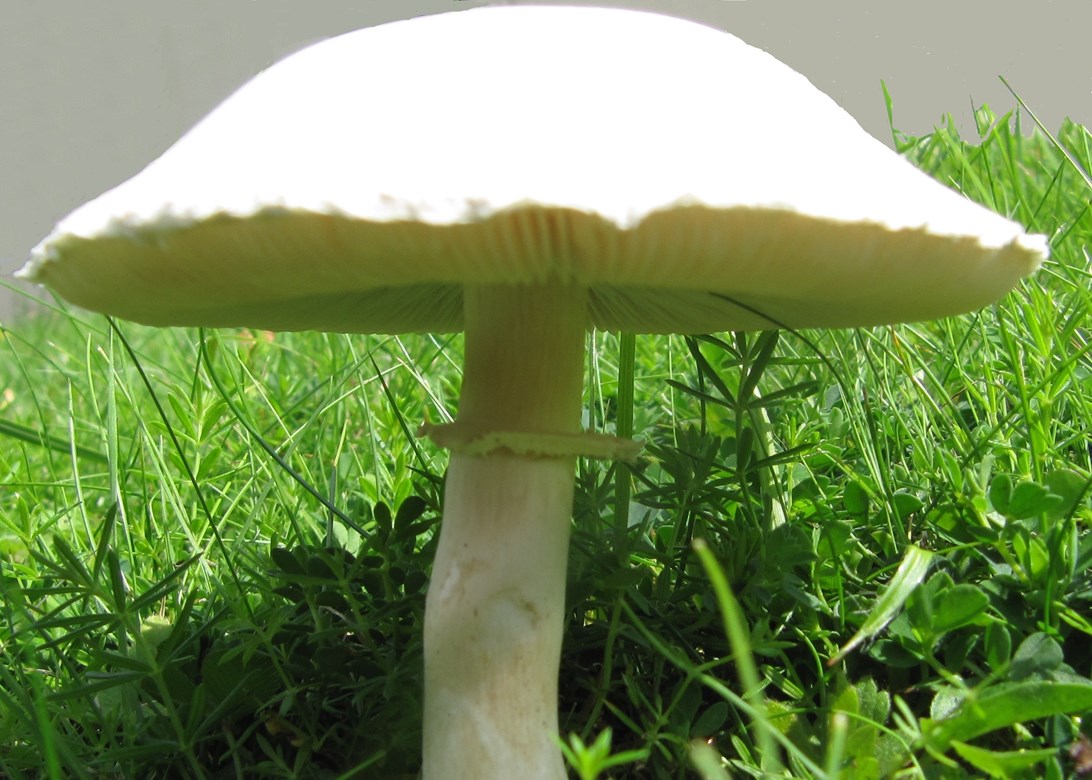
Showing the ring or annulus circling the upper stalk that can be 7-20 cm long
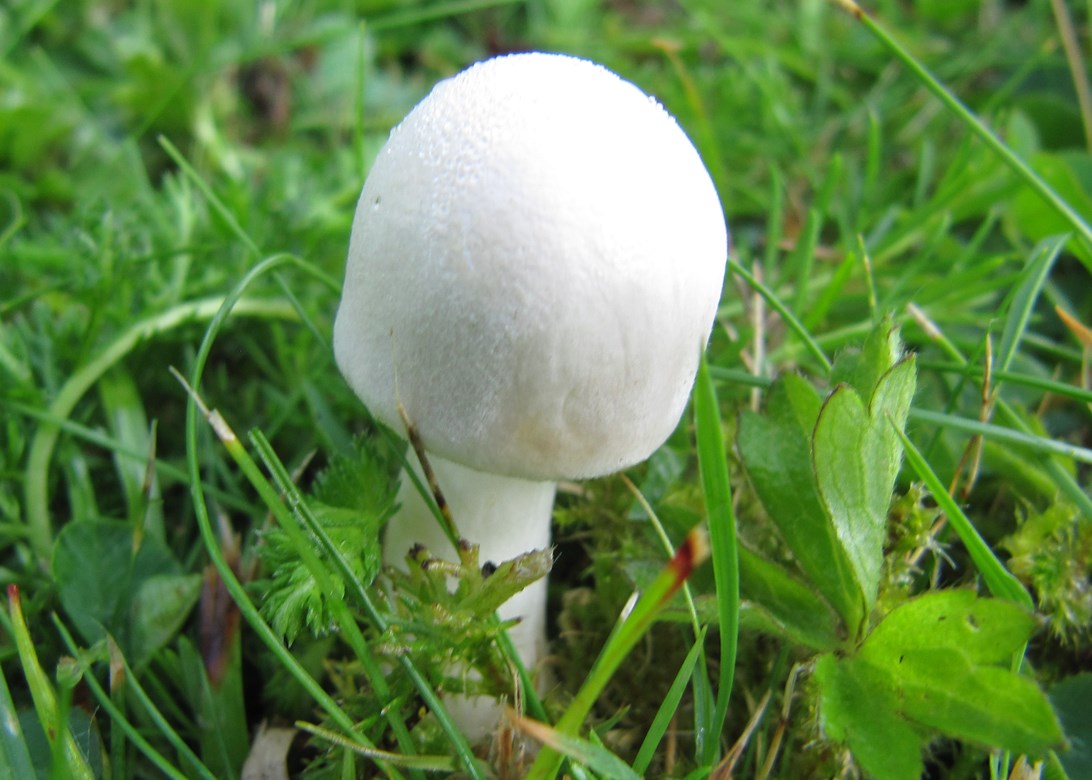
Young angel resembling a puffball
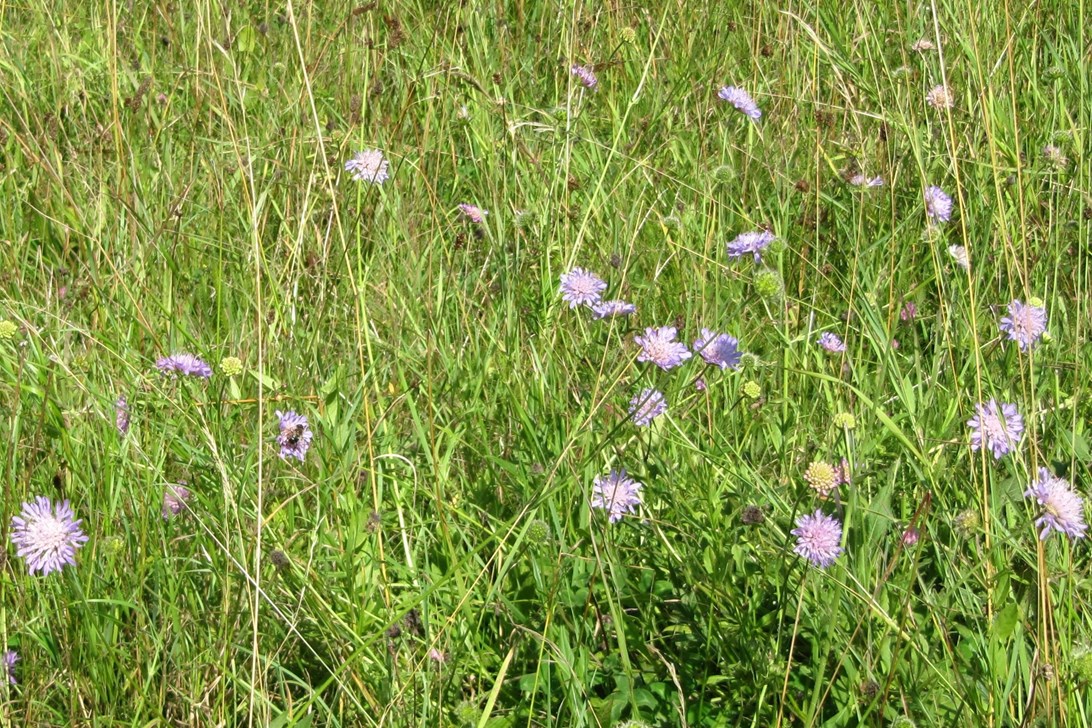
Field scabious
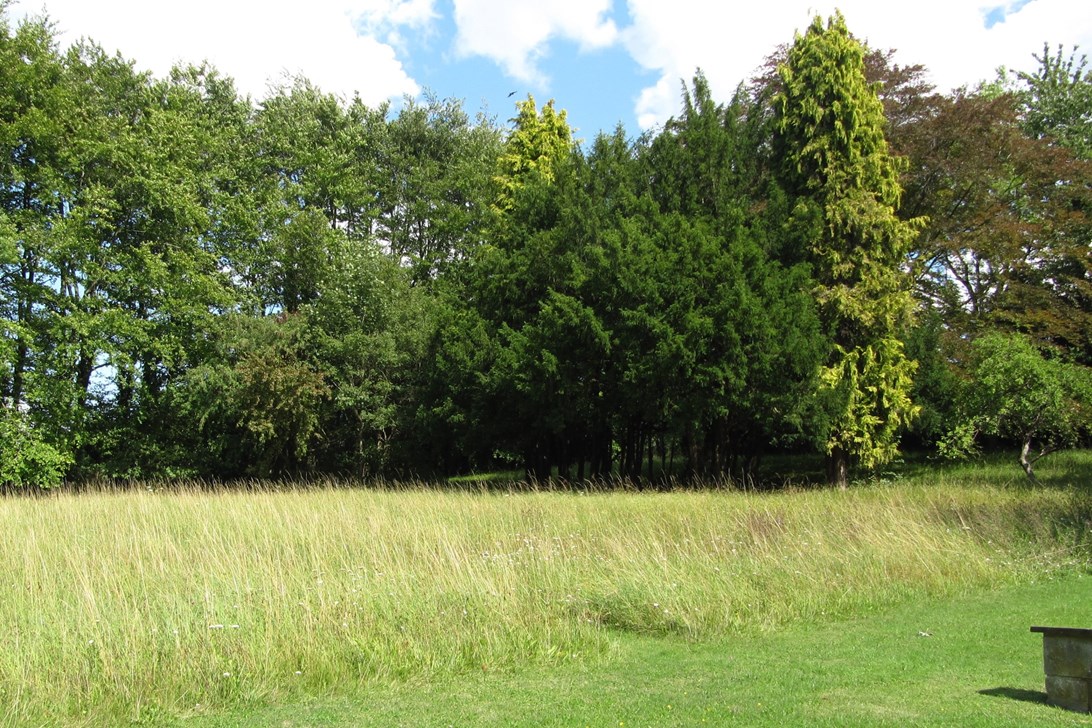
Mid August
